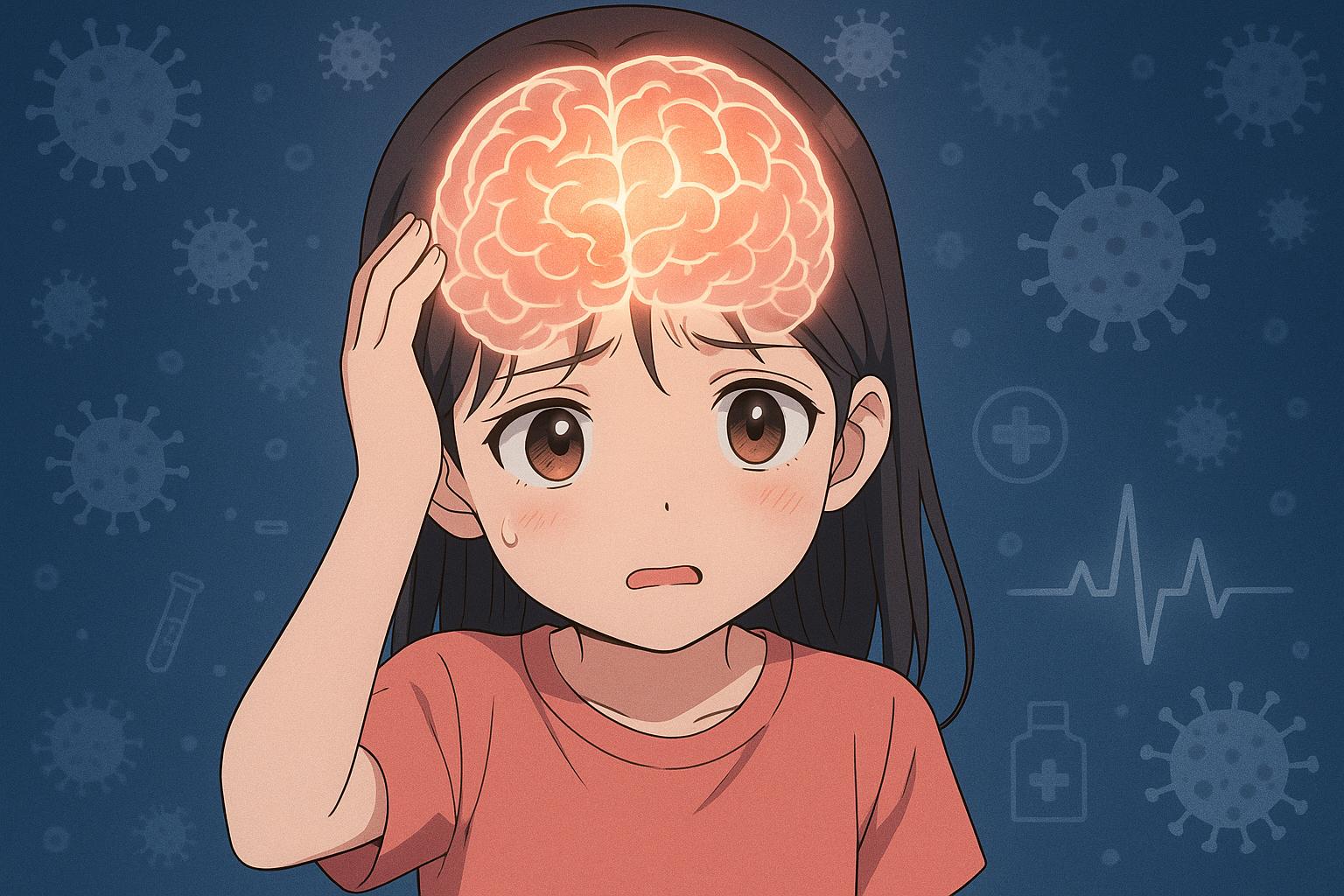Experts are sounding the alarm regarding a rare but deadly neurological side effect of COVID-19, evidenced by the tragic case of an eight-year-old girl who lost her life after the virus spread to her brain. This case, reported by medical professionals at the Guangzhou Women and Children's Medical Centre, underscores the urgent need for heightened awareness of how COVID-19 can manifest atypically in children.
Initially, the young girl exhibited symptoms commonly mistaken for a routine virus: a fever exceeding 38°C, a rash, and vomiting. Critically, medical staff did not conduct a COVID-19 test, as her signs lacked an "identifiable trigger." Unfortunately, within days, the girl began suffering severe seizures that left her "frothing at the mouth" and incapacitated. It wasn’t until her condition deteriorated dramatically that she was moved to a specialist facility, where she was subsequently intubated to assist with her breathing.
Testing revealed that she had developed acute necrotising encephalopathy (ANE), a rare condition often provoked by viral infections, where the immune system reacts overzealously to pathogens like COVID-19 or influenza. While there are only a few hundred documented cases of ANE in medical literature, the severe impact it has on the brain is significant. The body’s inflammatory response leads to extensive tissue damage, swelling, and the potential for bacterial toxins to enter the brain, resulting in cell death.
Medical reports from the facility indicate that despite aggressive treatment efforts—including antibiotics to address a potential infection and corticosteroids to manage inflammation—the girl's condition did not improve, and she was ultimately declared brain dead after nine days of hospital care.
This incident aligns with a broader pattern observed in children infected with COVID-19. A multinational study pointed out that children who contract the virus can exhibit neurological symptoms, including brain lesions and multi-system inflammatory responses, diverging from the more common respiratory presentations seen in adults. In fact, a significant proportion of children diagnosed with multisystem inflammatory syndrome reported brain abnormalities, demanding urgent medical attention.
Moreover, studies have shown that children with COVID-related neurological complications often experience rapid deterioration compared to adults, highlighting the need for prompt diagnosis and treatment. One retrospective analysis illuminated that systemic inflammation, rather than direct viral invasion of the brain, might be at the core of the neural damage observed in pediatric cases.
The recognition of conditions such as ANE as a potential sequel of COVID-19 is a stark reminder of the nuances of the virus, particularly its unpredictable impacts on children. This case not only illustrates the importance of identifying atypical symptoms early but also stresses the necessity for increased clinical vigilance among healthcare providers. The clinicians involved in this tragic case assert that early recognition and intervention might significantly influence outcomes for young patients experiencing severe neurological effects.
As countries like the UK gradually move past pandemic-driven restrictions, public health measures are transitioning away from intensive tracking of COVID-19's prevalence. However, this case serves as a sobering reminder that COVID-19 remains a significant health threat, especially for vulnerable populations such as children. Continued education and awareness are essential in combating the lingering challenges posed by the virus as society adjusts to a new normal.
Reference Map
- Paragraph 1: [1]
- Paragraph 2: [1]
- Paragraph 3: [1]
- Paragraph 4: [1], [2]
- Paragraph 5: [3], [4]
- Paragraph 6: [5]
- Paragraph 7: [6]
- Paragraph 8: [7]
Source: Noah Wire Services
